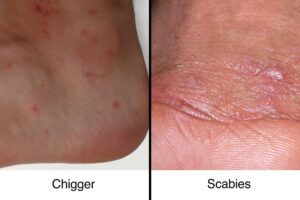Chigger bites are caused by Chiggers, which are tiny orange-red bugs responsible for intense itching and reddish bumps on your body. This blog post will acquaint you with this invisible, flesh-loving bug you want to avoid at all costs.
What are chigger bites?
Chiggers are mites that belong to the arachnids family and appear blood-red in color. They are also known as ‘harvest mites,’ ‘red bugs,’ and ‘berry bugs.’ Chiggers measure approximately 0.3 to 0.45mm in size; hence, you cannot see them without looking through a magnifying glass.
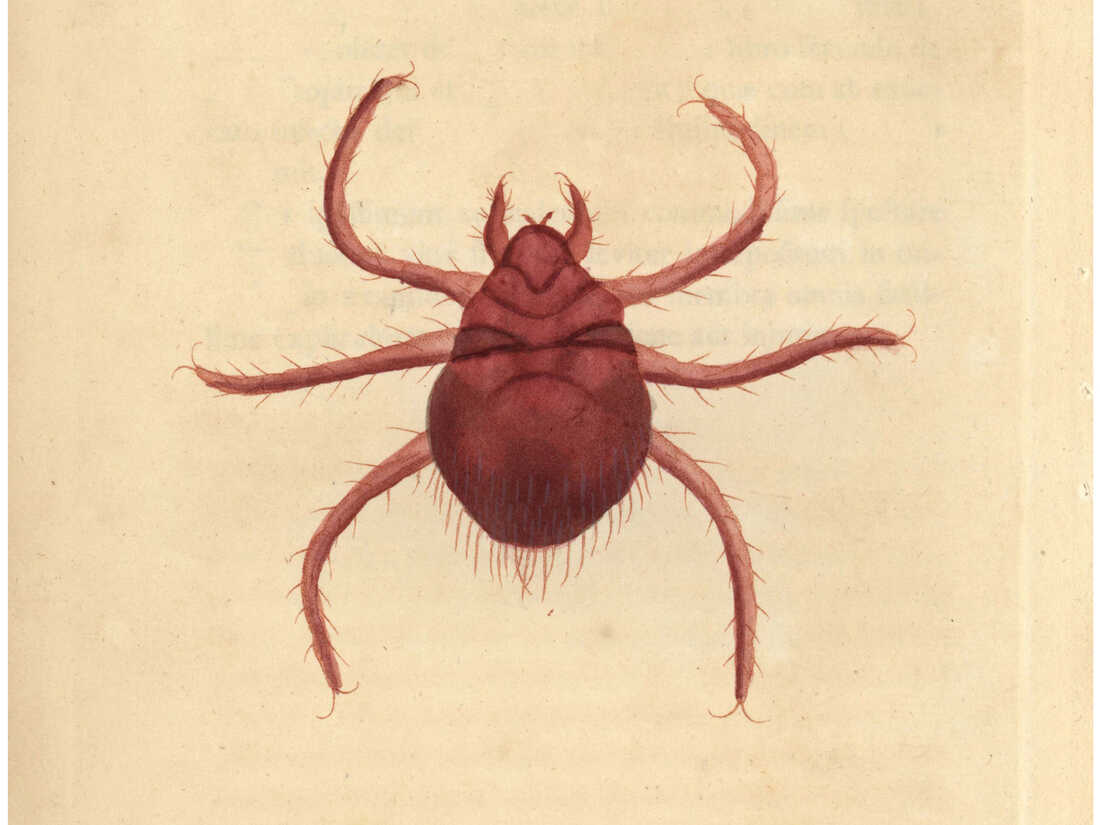
You would only realize chiggers on your body once they wear off and the itching sets in. Adult chiggers are not problematic as they feed on insects and their eggs to survive. It is their larvae that use human hosts to grow and thrive.
Where are chiggers found?
Chiggers are present globally; however, most of its species are prevalent in the Southeastern, Southern, and Middle Western USA. They prefer hiding in tall, overgrown grass, shrubs, and wooded areas. You can get them in your backyard or a jungle where you go hiking or camping. You will also find them in shrubbery near lakes and ponds. Adults lay eggs around the spring season, and the offspring hatch in the summer. Chiggers love warmth. They become inactive at 60F1 and die when the temperature scale hits 42F.
How do we catch chiggers?
You can acquire chiggers when your legs or body parts touch against tall blade grass or shrubs bearing the bugs. Here is what follows next:
- They attach to your skin using their chelicerae (mouth parts), releasing an enzyme in their saliva to break down the cells and create a stylostome (tiny furrow)
- The bug keeps feeding itself through the stylostome for about three to four days2, or maybe even a couple more days before falling off.
- Sometimes, they latch onto your skin in clusters; clusters are visible to the naked eye.
- They prefer the folds and warmer regions of our body to hide and feed, such as the armpits, crotch, knees, and areas of tight clothing. They also latch onto exposed body parts.
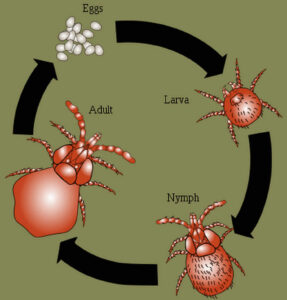
What do chigger bites look like?
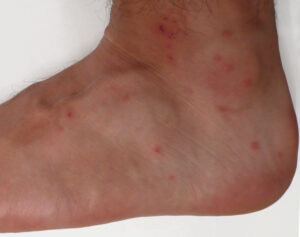
Identifying chigger bites is crucial to proceeding with the treatment.
Typically, most bug bites look and feel alike. The area of the previous visit gives a clue about the culprit.
- Chigger bites look like tiny red dots. You may find them on your ankles and legs as they scrub against tall grass blades when walking through a garden or a dense jungle.
- Chigger bites are usually not notable until the onset of intense itching that sets off once the baby bug is satiated and decides to leave your body. Chigger bites gradually turn from red to pale.
- Bites by chiggers in clusters yield a bigger macule and maybe a lot more itching than expected.
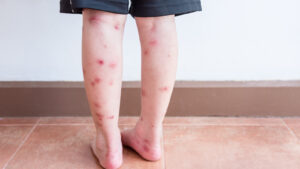
Chigger bites treatment:
Though not life-threatening, chigger bites are pretty bothersome: they cause a lot of irresistible itching. Treatment of chigger bites is mainly limited to the resolution of itching.
- Though hard to resist, you must avoid itching to prevent scars and infection. Frequent itching at the sites of chigger bites can lead to skin breaches, serving as a potential entry point for more bugs and bacteria.
- Use a soothing lotion such as calamine for local relief.
- Creams containing hydrocortisone also serve the purpose. However, these must not be used without your doctor’s prescription, as the injudicious application of steroids can elicit adverse effects.
- In case of an infection, consult your local GP regarding an antibiotic prescription. They may also advise you to take a short course of antihistamines to control that voracious itching.
Home remedies for chigger bites:
For some tolerable versions of chigger bites, home remedies can provide relief from itching:
1. Take a shower:
Showering with warm water and scrubbing the body with soap wash away the mites. Always shower after returning home and rinse your clothes in hot water whenever you are in the fields. Warm water also soothes itching from chigger bites temporarily.
2. Colloidal oatmeal:
This powdered form of oat grains (Avena sativa) has been a part of traditional medicine for centuries owing to its skin-softening and anti-inflammatory properties. You can easily get it from your local pharmacy.
3. Essential oils:
Application of essential oils over the chigger bites – typically those derived from lavender, rosemary, tea tree, camphor, and basil – also soothe and cool the area.
You must visit a doctor if the bites are bothering you a lot or if they seem to be infected, i.e., you have a fever, swelling, or other signs of infection.
Allergic reaction to chigger bites:
Allergic reaction limited to severe itching is commonly seen among the victims of chigger bites. Life-threatening emergencies are rare, yet a possibility.
Such types of reactions occur in people with increased sensitivity to foreign bodies.
Severe allergic reactions can present with wheezing, chest tightness, excessive drooling, dizziness, nausea, headaches, and vomiting. If such is the case, immediate medical attention is required, as it is life-threatening.
Chigger bites on kids:
Kids are more prone to bites by chiggers as they spend more time playing outdoors on the grass. Here is what you can do to protect them:
- It is advisable to cover the exposed skin areas of your child with proper clothing. Apply insect repellent solution before allowing them to play in your garden.
- Make sure that they shower warmly right after returning home.
- Treatment of kids is much similar to that of adults; however, in cases of infection in a child, you must see a pediatrician.
Scabies Vs. Chigger Bites:
Both conditions result from microscopic organisms’ bites leading to relentless itching and discomfort. However, since the causative bugs differ, their treatment strategies also differ. Scabies requires killing the bug, whereas chiggers fall off the human body and do not require killing. Treating the itching in the latter case is usually sufficient. Moreover, scabies is highly contagious. It spreads pretty fast in a household. Compared to that, the contiguity factor with chiggers is close to none.
Wrap up:
Chigger bites are rather annoying than dangerous. Life-threatening reactions are rare; most symptoms revolve around itching and secondary infection. It is crucial to know about the habitat of chiggers and to identify chigger bites to prevent and treat them well.
References:
- Chiggers. (n.d.). Missouri Department of Conservation. https://mdc.mo.gov/discover-nature/field-guide/chiggers
- Parasitic Mites of Humans | Entomology. (n.d.). Entomology.ca.uky.edu. Retrieved January 18, 2023, from https://entomology.ca.uky.edu/ef637

